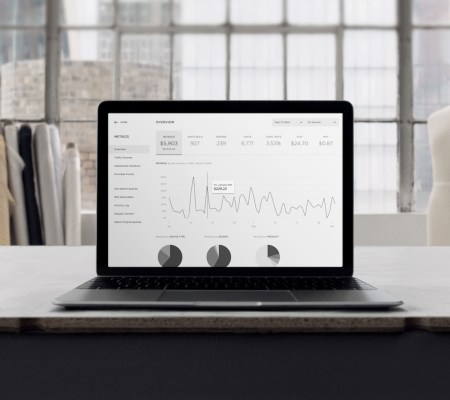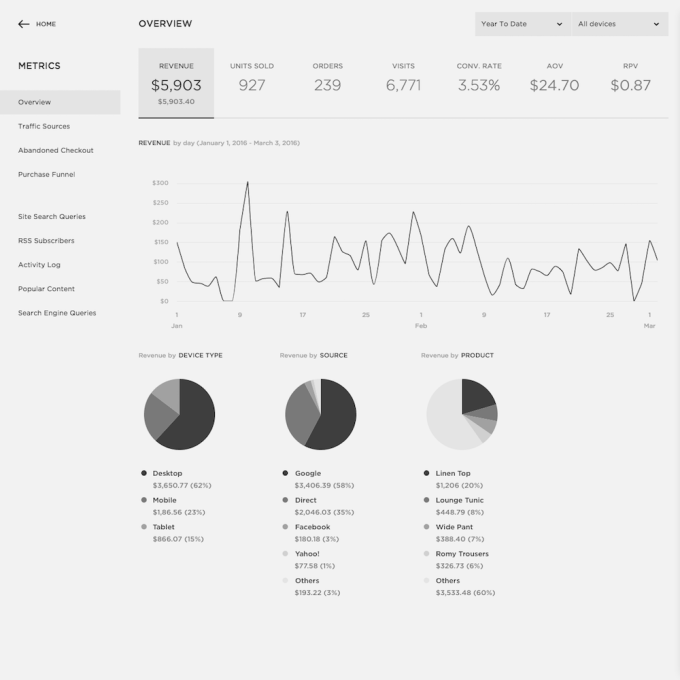Website creation platform Squarespace is introducing new analytics features for its e-commerce businesses.
As explained to me by Director of Product Natalie Gibralter, Squarespace’s Commerce product was originally designed for businesses who saw e-commerce as a “secondary goal” of their website — say, a restaurant selling gift cards or a musician selling merchandise. Turns out, however, that selling online was central to many Squarespace customers, so the company revamped Commerce last year with those businesses in mind.
Changes included new Commerce templates, a Commerce-specific mobile app and the promise of new analytics specifically for Commerce users — analytics that the company has now officially launched.
After all, if you’re trying to build an e-commerce business, tracking things like visits and pageviews is nice, but you really want to know how many products you’re selling and how much money you’re making.
So the new Squarespace Analytics dashboard includes data on things like revenue, units sold, conversion rate, average order volume and revenue per visit.
It also allows businesses to track each step of the purchase funnel, see how different websites and social networks are driving sales and examine how those numbers break down by device type. And there’s data specifically about the effectiveness of Squarespace’s Abandoned Checkout feature (where automated emails get sent to customers when they leave items in their shopping cart without completing the purchase).
Gibralter said the goal here is not to overwhelm businesses with numbers, but rather give them key data that can drive their decisions, like helping them decide where to spend their marketing dollars or see whether website changes are actually helping or hurting sales.
“This is really just the start of what we’re trying to do here,” she added. “We have a lot more planned in terms of continuing to build many more actionable insights for our customers around product merchandising, [understanding] who their customer base is, and so on and so forth.”

